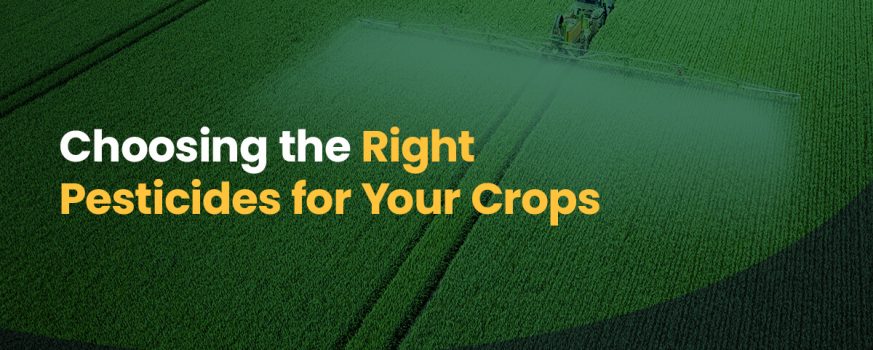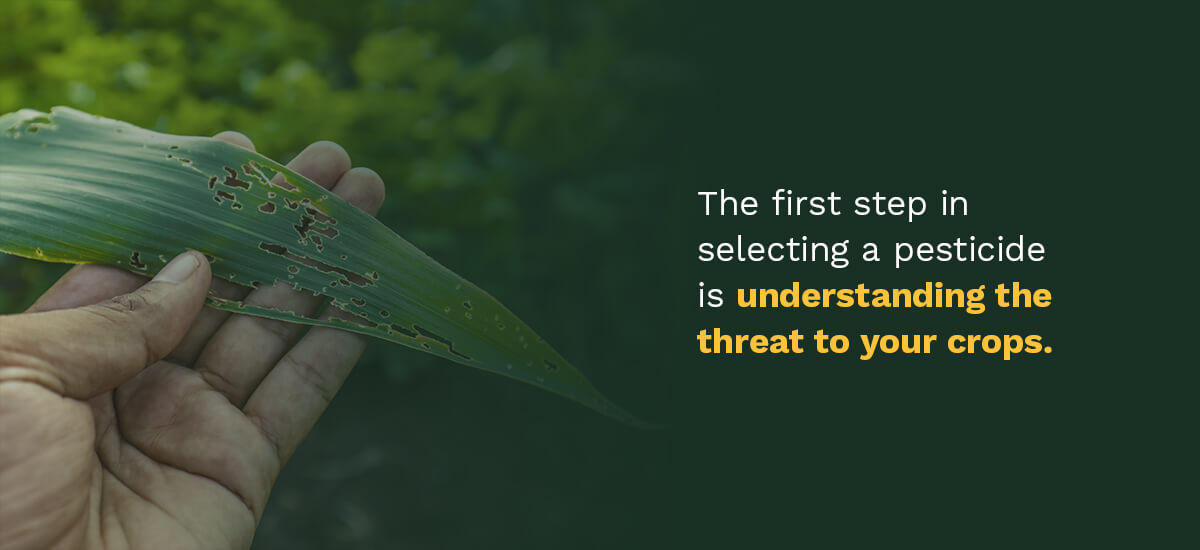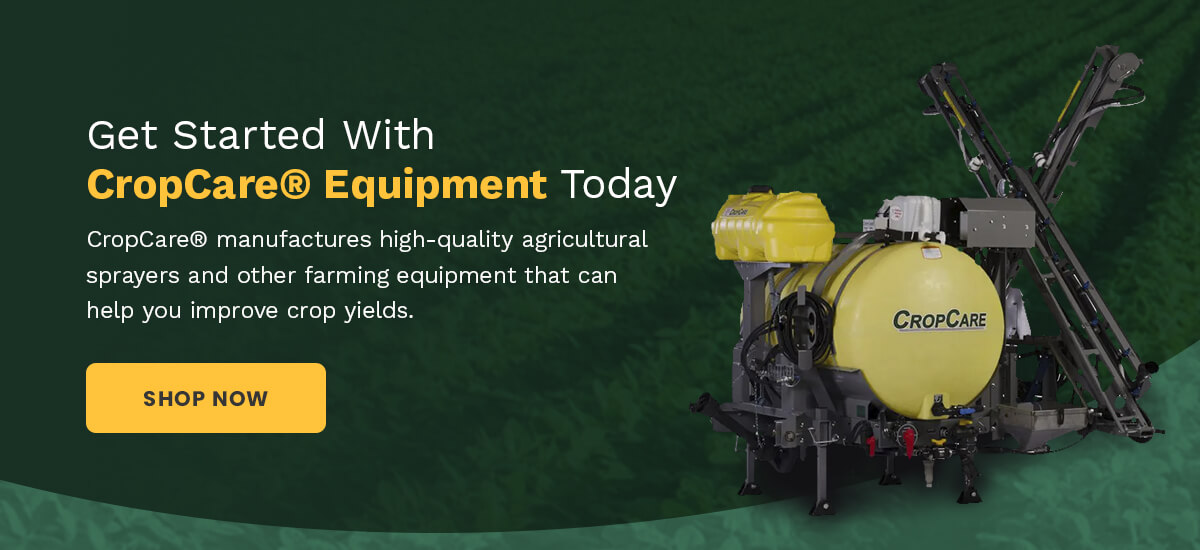
Pesticides are a critical tool for farmers and agricultural professionals. These substances kill and repel pests or other growths that harm crops. In turn, crops stay healthier and don’t get destroyed by these external forces. With pesticides, farmers can produce higher growth yields and protect their crops more efficiently.
Each pesticide has its own applications and benefits. And with so many pesticide types available, picking one for your crops can sometimes seem overwhelming. Understanding the most commonly used types for farming can help you make the best selection.
Here is an overview of choosing the correct pesticide for your farming crops.
Types of Pesticides Used in Farming
While all pesticides are made to keep away pests, they are available for many different kinds of uses. The broad range of pesticides makes it important to establish a classification system. That way, agricultural professionals can understand the differences between them and select the best one for their situation.
These are some of the ways that pesticides are classified:
- By pests: Many professionals classify pesticides by the pest they target. They create terms for different types by combining the name of the pest with the suffix “-cide”. For example, a pesticide that attacks algae is referred to as an algicide, and a pesticide that targets fungus is known as a fungicide. This is a frequently used classification method because it allows you to choose a pesticide based on a specific pest control problem. In other words, if you were experiencing a fungus infestation, you would purchase fungicide to attack this problem directly.
- By active ingredients: You can also classify or group pesticides based on their active ingredient. The active ingredient is the biologically active component in a pesticide. These ingredients are typically the force that controls pests and their name must be printed on the pesticide’s container.
- By mode of action: Next, you can also classify pesticides by their mode of action (MOA), which is the way a pesticide controls pests. For instance, one type of insecticide might control pests using a different technique than another. A pesticide’s MOA is listed on its container as a letter or number. You can use these numbers to group pesticides with the same MOA together.
- By how or when they work: Lastly, professionals also group pesticides by how or when they function. There are many different examples of how pesticides work. For instance, some pesticides use direct contact to repel pests. In this method, the spray is applied directly to crop surfaces and the pesticide begins to work. Or, a different type called selective pesticide only attacks a certain type of pests.
All of these classifications can help you select the best pesticide for your needs and which pesticide to use for your crops. The first step in selecting a pesticide is understanding the threat to your crops. For example, most agricultural crops are exposed to countless insects each day. With this knowledge, you can apply insecticide to your crops.
4 Most Common Pesticides Used in Agriculture
Farmers use various types of pesticides on their crops to keep them healthy. If you’re wondering what to consider in a pesticide, think about growth near your crops and how it might affect them. Factors like fungus or weeds could have adverse effects on your crops, but pesticides can keep them under control. The four most common pesticides include insecticides, herbicides, fungicides and bactericides.
Insecticides
Insecticides are frequently used in agriculture to protect crops from insects. The chemicals in insecticides control or kill insects, keeping them away from crops. Insecticides act in a variety of ways to keep bugs under control. For instance, some insecticides might target an insect’s nervous system, while others inhibit their growth regulators. While there isn’t a most effective pesticide, insecticides are typically highly efficient at stopping pests.
Because different insect types are attracted to food types, farmers use different types of insecticides for crops. In other words, an insecticide for corn might not have the same effect on grapes.
These are some common insecticide names:
- Permethrin
- Methomyl
- Beta-cyfluthrin
- Sevin
Spraying your crops with insecticides will help deter insects. Your crops encounter fewer bugs and remain safe to eat. Farmers can also have higher crop yield results.
Herbicides
Herbicides are another commonly used pesticide in farming. These chemicals target weeds and other unwanted vegetation. By removing unwanted growth, your crops have more room to grow and are more likely to produce more vegetation. Herbicides stop cell division and photosynthesis, causing unwanted growth to fall away or halt progress.
In farming, you can apply herbicides before or during your planting process. You can also use them during autumn to maximize fall harvests. After application, they can help crops grow to their full potential and optimize crop yields.
Here are frequently used herbicides in farming:
- Glyphosate: This herbicide is found in popularly used products, such as Roundup. Glyphosate is generally applied to soybeans, corn or cotton to reduce surrounding growth.
- Atrazine: Atrazine is another herbicide used for corn, soybeans or sorghum. They halt the process of photosynthesis in external plant growth.
- Pendimethalin: This type of herbicide attacks root growth, keeping weeds and other plants from surfacing. It’s typically applied to crops like beans and peanuts.
Fungicides
Next, fungicides are also frequently used in agriculture. Fungicides kill or halt the development of fungus and its spores. Additionally, they can also target mold or mildew.
As one of the biggest threats to crop health, fungi can cause diseases in crops and other plants. If left untreated, you could lose an entire batch of crops due to fungal diseases. This makes fungicides crucial for many agricultural applications, as they can attack fungi and their diseases before they ruin crops.
Farmers often apply fungicides to crop seeds or directly on their surfaces. Common applications include fruits, vegetables and grains. Once crops are sprayed with fungicides, the chemicals repel potential fungi growth by disrupting metabolic growth. Then, your crops become safer from the threat of fungal infection.
Fungicides often consist of chemical compounds like:
- Sulfuric compounds
- Thiazoles
- Triazines
- Thiocarbamates
Bactericides
Lastly, bactericides are also commonly used in farming and agricultural applications. Bactericides prevent the development of bacteria on crops. These chemicals attack bacteria on the leaves of crops or inside plants. However, they don’t remove the bacteria present that is essential for plant growth.
Similar to fungus, bacteria can severely damage plants if not addressed. Bactericides can lessen the effects of bacterial damage and improve crop yields.
Some of the active ingredients found in bactericides include:
- Alcohol
- Chlorine compounds
- Formaldehyde
- Hydrogen peroxide
Get Started With CropCare® Equipment Today
Spraying your crops with pesticides is essential for safe growth. CropCare® manufactures high-quality agricultural sprayers and other farming equipment that can help you improve crop yields. Our 3-Point Boom Sprayers are perfect for spraying pesticides and ensuring your crops stay safe.
To get started with CropCare®, find a dealer near you or contact us today.



